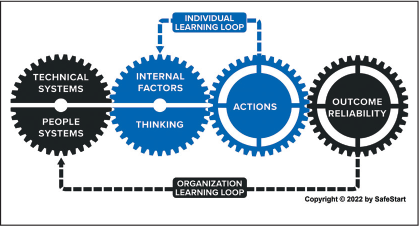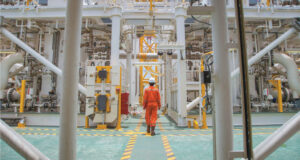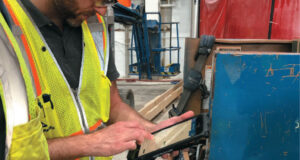Most organizations try to reduce recurring injury potential by using the hierarchy of controls (HOC) as the driving force to remove/replace the hazard, isolate the hazard, change the way people work, or protect the worker with PPE. But the HOC doesn’t typically include the management of human factors — which explains why you need more than just the HOC.
Hu·man fac·tors /′(h)yoomən/′faktərs/ The ‘people elements’ of individual and system conditions that influence performance and reliability.
Examples of human factors include rushing to complete work in order to get home on time; or seeing the effects of fatigue in real-time as they impact decision making, slow down physical reaction times, and diminish the ability to identify and respond to hazards.
Human factors are the physical and mental states that affect how people think and act, causing people to deviate from the intended behavior embedded in organizational systems. Organizations can not “engineer out” all human factors if people interact with systems. Therefore, human factors, combined with hazardous situations, increase the potential for incidents.
When using human factors to help identify some of the most common injuries occurring year over year, you will notice that the way an individual feels or thinks in the moment has a tremendous impact on their overall safety — whether it’s fatigue, distraction, or overconfidence. You can start to uncover the root cause of most outcomes by looking at a person’s state of mind. Most of the injuries that occur aren’t caused by the most dangerous activities; rather, injuries happen when something is no longer perceived to be hazardous (see Fig. 1).

The human factors risk pattern is involved in 95 percent of all safety and organizational performance outcomes. When this pattern occurs, the impact (positive or negative) on categories like injury risk, organizational performance, and culture is no longer reliable. However, organizations that empower their workforce with individual learning loops skills will help their people recognize when this pattern is at play — and, most importantly, what they can do about it. These employees can continually learn from all positive and negative human factors-related outcomes.
The human factors framework (Fig. 2) is a model for how work and safety happen day to day, a diagram of how different parts of an organization interact, and a diagnostics tool for evaluating safety performance. It needs to apply to your specific workplace — starting with technical systems like engineering, process, equipment, and safety management systems; plus people systems like the work team, supervisory skills, and organizational culture. The organizational learning loops represent the cycle that helps you define your current processes to identify what needs to change and what doesn’t. Internal factors like fatigue, illness, distraction, and overconfidence have tremendous impacts on things like decision-making, going on autopilot, attention span, and habits. These then impact actions such as behavior, accuracy, risk perception, or memory. The value of the human factors perspective is to recognize that everybody’s actions are affected by various internal and system factors and that individuals can inform the organization of needed improvements if employees are engaged in this safety process.

When it comes to employee engagement, you’re really looking at culture and climate. Culture can be defined within an organization as the way things are done around here — the value placed on safety and degree of personal accountability for safety, the safety personality of an organization, what people believe, and what they value. Yet many organizations looking to achieve their culture goals fail to recognize the impact that the day-to-day climate has on the long-term culture. Climate can be defined as how things feel around here — the perceived value of current safety, being influenced by other people’s opinions, or changes based on circumstances like production cycles or having a major incident. Recognizing the impact of the climate on your culture gives you the ability to understand that you can’t fix your culture overnight.
In addition to system improvements and culture, a positive safety climate can produce stronger leading indicator data. Combine that with knowledge of company-wide human factors, both individual and organizational learning loops, and practical skills that can be used by everyone… and you will move steadily toward operational excellence.
 Paper 360
Paper 360

